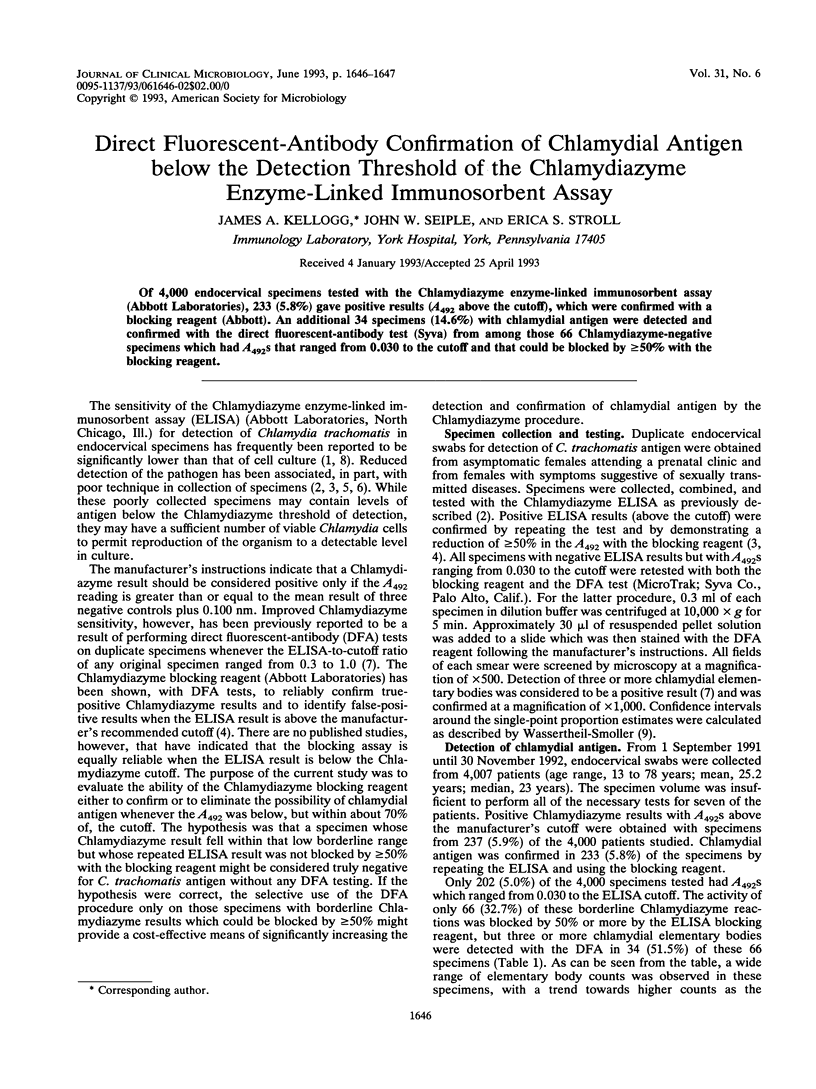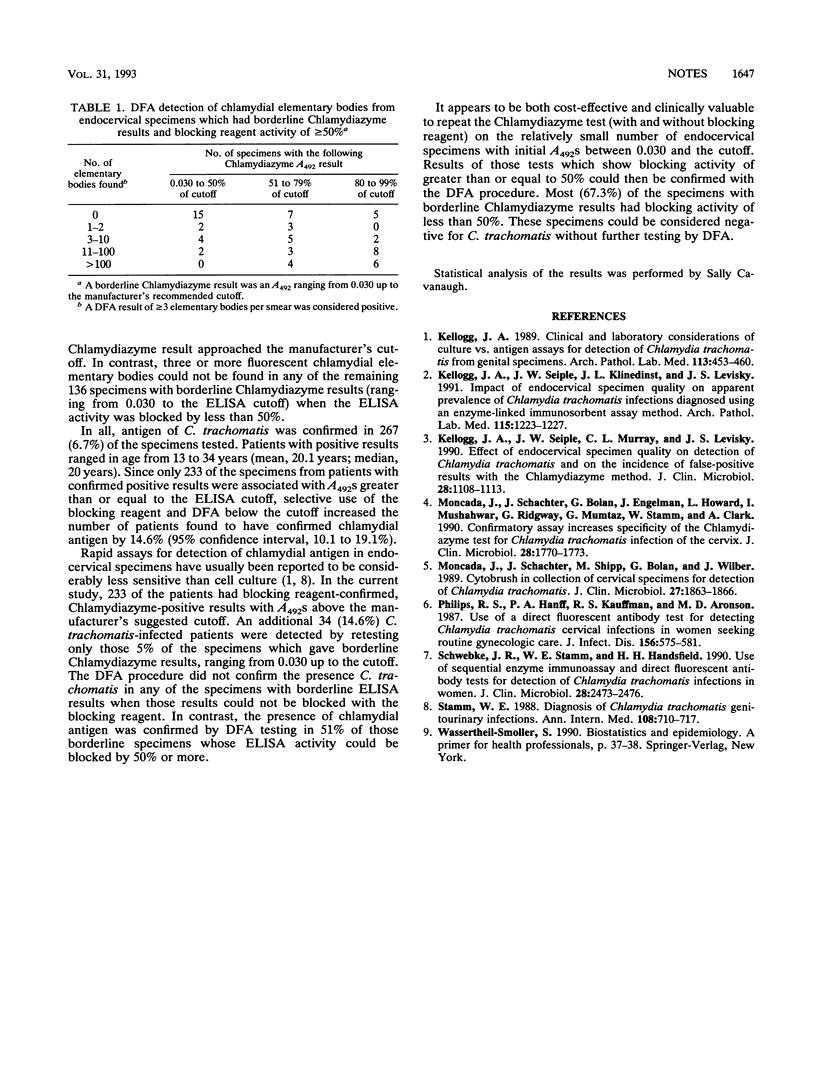Abstract
Of 4,000 endocervical specimens tested with the Chlamydiazyme enzyme-linked immunosorbent assay (Abbott Laboratories), 233 (5.8%) gave positive results (A492 above the cutoff), which were confirmed with a blocking reagent (Abbott). An additional 34 specimens (14.6%) with chlamydial antigen were detected and confirmed with the direct fluorescent-antibody test (Syva) from among those 66 Chlamydiazyme-negative specimens which had A492s that ranged from 0.030 to the cutoff and that could be blocked by > or = 50% with the blocking reagent.
Full text
PDF

Selected References
These references are in PubMed. This may not be the complete list of references from this article.
- Kellogg J. A. Clinical and laboratory considerations of culture vs antigen assays for detection of Chlamydia trachomatis from genital specimens. Arch Pathol Lab Med. 1989 May;113(5):453–460. [PubMed] [Google Scholar]
- Kellogg J. A., Seiple J. W., Klinedinst J. L., Levisky J. S. Impact of endocervical specimen quality on apparent prevalence of Chlamydia trachomatis infections diagnosed using an enzyme-linked immunosorbent assay method. Arch Pathol Lab Med. 1991 Dec;115(12):1223–1227. [PubMed] [Google Scholar]
- Kellogg J. A., Seiple J. W., Murray C. L., Levisky J. S. Effect of endocervical specimen quality on detection of Chlamydia trachomatis and on the incidence of false-positive results with the Chlamydiazyme method. J Clin Microbiol. 1990 Jun;28(6):1108–1113. doi: 10.1128/jcm.28.6.1108-1113.1990. [DOI] [PMC free article] [PubMed] [Google Scholar]
- Moncada J., Schachter J., Bolan G., Engelman J., Howard L., Mushahwar I., Ridgway G., Mumtaz G., Stamm W., Clark A. Confirmatory assay increases specificity of the chlamydiazyme test for Chlamydia trachomatis infection of the cervix. J Clin Microbiol. 1990 Aug;28(8):1770–1773. doi: 10.1128/jcm.28.8.1770-1773.1990. [DOI] [PMC free article] [PubMed] [Google Scholar]
- Moncada J., Schachter J., Shipp M., Bolan G., Wilber J. Cytobrush in collection of cervical specimens for detection of Chlamydia trachomatis. J Clin Microbiol. 1989 Aug;27(8):1863–1866. doi: 10.1128/jcm.27.8.1863-1866.1989. [DOI] [PMC free article] [PubMed] [Google Scholar]
- Phillips R. S., Hanff P. A., Kauffman R. S., Aronson M. D. Use of a direct fluorescent antibody test for detecting Chlamydia trachomatis cervical infection in women seeking routine gynecologic care. J Infect Dis. 1987 Oct;156(4):575–581. doi: 10.1093/infdis/156.4.575. [DOI] [PubMed] [Google Scholar]
- Schwebke J. R., Stamm W. E., Handsfield H. H. Use of sequential enzyme immunoassay and direct fluorescent antibody tests for detection of Chlamydia trachomatis infections in women. J Clin Microbiol. 1990 Nov;28(11):2473–2476. doi: 10.1128/jcm.28.11.2473-2476.1990. [DOI] [PMC free article] [PubMed] [Google Scholar]
- Stamm W. E. Diagnosis of Chlamydia trachomatis genitourinary infections. Ann Intern Med. 1988 May;108(5):710–717. doi: 10.7326/0003-4819-108-5-710. [DOI] [PubMed] [Google Scholar]


